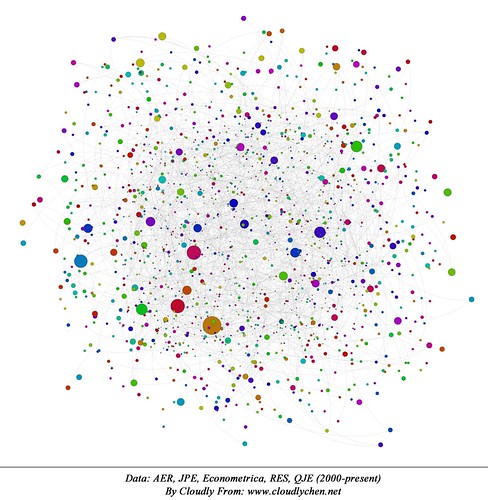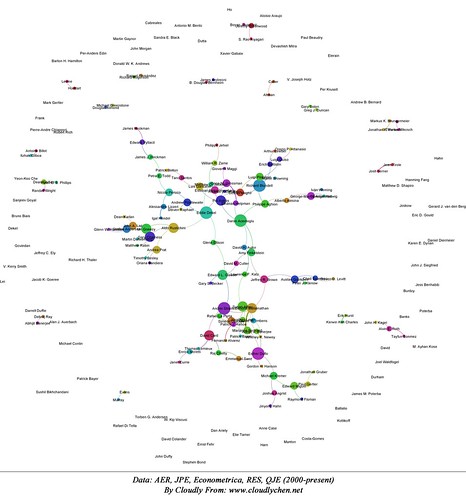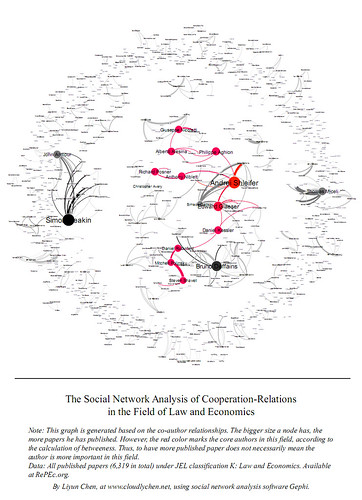Well, recently I'm focusing on an interesting model --social network and thinking about an old issue --social behavior. The social network model is really attractive (if it can be regarded as a model, or more exactly, a theory), especially for people like me who are wondering the traditional assumptions in classical economics while trying to borrow something from other subjects, like sociology.
Using complex network as a mathematical tool, the social network model includes so many factors that cannot be described in the past. Well, I should admit here that I haven't taken any related courses yet, and all I know about sociology are inherited from some unprofessional books. I should also admit that I was really attracted by behavior economics last winter, but until now had I started to "study" it in an academic way. Maybe the reasons are pretty simple: first, I was busying applying for postgraduate study positions last winter; second, there was not a good teacher who was able to teach this course; third, I have no idea about which book (or textbook) should be chosen as an introductory one.
Well, I need some time to make it clear in my mind that how social network works. However, I've got a much easier question yet. That is, in traditional macroeconomic models, like the Lucas' island model, when we are trying to calculate the sum of all individual's save, at most time we simply add them together, (i.e. a*N, where N is the number of population). However, I think at least the individual's save should be regarded as a stochastic variable (e.g follows a normal distribution, or Brownian movement), so the sum should also follow a normal distribution. Well, in econometrics we do not need to worry about this question. But I wonder whether it would be valuable if we can make this small change.
In the example above, I want to figure out that the micro-foundations for macroeconomics should be dug more deeply in order to persuade readers. Borrowing some mature conclusions from other fields, this task shall be easier. Alternatively, economists should make an effort (maybe something can be found from data) to know more about the relationships between individual behavior and social behaviors, thereby establishing a proper model to describe them. Personally speaking, the study of social network may be helpful, since different from other social science, at least it has a mathematical model...And the diffusion of information can be easily introduced into macroeconomic models in this way...WoW!




